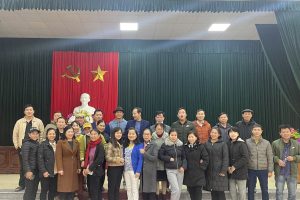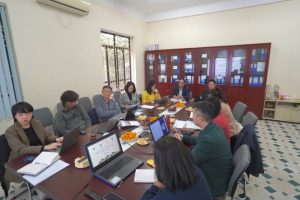Critical reflections on existing learning – drawing lessons for t-learning in the Mekong Delta
Vietnam’s Mekong Delta is one of the world’s three deltas mostly affected by climate change, where there are various forms presenting the nexus of climate change – water – food – energy – social justices and numerous models containing germ cells of T-learning potentials. In our latest news, we would like to share our stories and the lessons drawn from three typical models on T-learning process in our two selected research sites in Mekong Delta (Can Tho and Kien Giang)

Updated zoning map of Kien Giang, World Biosphere Reserve
The model of biodiversity conservation and livelihood improvement in the UNESCO Kien Giang Biosphere Reserve
The Kien Giang UNESCO Biosphere Reserve (BR) is situated in Kien Giang province of Vietnam and was recognized by UNESCO dated 27/Oct./2006 as the 2nd largest Biosphere Reserve in the network of 9 World Biosphere Reserves of Viet Nam. Besides the comprehensive strategy of combining agriculture with the protection of biodiversity and rare gene sources, this is a favorable space for T-learning process with the advantageous convergences of institution, technology and human.
Kien Giang has learning embedded within its communities. Every commune possesses a community learning center where there are meetings, seminars, classes to assist people to enhance their knowledge or explore and address any emerging issues that arise. It will be a good site of training courses, collaborative forum to implement the proposed T-learning activities. The existing activities in the Biosphere Reserve, especially raising peoples’ awareness on sustainable development are considered as germ cell activities of T-learning in Kien Giang.

The model of garden – pond – barn – biogas (Vuon – Ao – Chuong -Biogas/VACB)
This project is found in Can Tho city. The city faces challenges of rapid urbanization as well as climate change vulnerability and the social injustice that might result from differential vulnerability across the city. The Garden-pond-barn-biogas project arose from collaborations between farmers and scientists and contributes towards household economic wellbeing.

Mr. Hoang Van Thanh (Mr. Hai Thanh) who is one of 401 households in Can Tho city received funding for biogas bags under the CDM (Clean Development Mechanism), project of JIRCAS (Japan International Research Center for Agricultural Sciences). This is a closed model which treats waste from livestock (pigs, fish) and cultivation, and produces gas for household cooking as well as provides energy back to livestock. Mr. Hai Thanh who is living in My Khanh commune has himself learnt and applied creative biogas solution to not only handle farmer household waste and provide enough electricity for cooking, but also create a lot of improvements to maximize use efficiency in the model. His innovations help to get the most energy from the biogas to each family, each farm household becomes a factory producing clean energy. Furthermore the project site also serves the function of a classroom where people can learn about the technology.
This case of farmer “scientist” can be seen as a good stem cell on T-learning. This stem cell grows well and spreads learning activities on saving and using renewable energy in the community thanks to factors such as response/willingness of the local people, the support of the project from the scientific and educational agencies (research institutes and universities) and the international and the involvement of local authorities as well.
Fish Sanctuary – the failed model but many lessons learned
The fish sanctuary presents an example of how sites of learning might be undermined by a lack of cooperation between various stakeholders. This site saw the bringing together of conservation, livelihoods and learning. The learning facilitated by the community space at the sanctuary resulted in the conservation of indigenous fish species and had direct benefits for fish dependent livelihoods. However, increasing urbanization caused the fish sanctuary water source to be cut off. The result was a disbanding of community learning activities at the site. A key challenge in this case was the buy-in of local government. From this a lesson can be learned about coordination amongst various local stakeholders such as farmers, managers and scientists.

Conclusion
Visiting and learning from existing models in the research sites provide abundant and useful sources for compiling T-learning materials and process in the Mekong river delta. The lesson learned stems from the local reality, the needs of the community and need for connection and close cooperation between all stakeholders, including coordination with mass organizations, the attention of governments and the support of the scientific agencies. It also clarifies roles, responsibilities and benefits of various stakeholders in the process of T-learning development or social learning activities. In other words, it is necessary to simultaneously combine approaches from the bottom-up and top-down.




